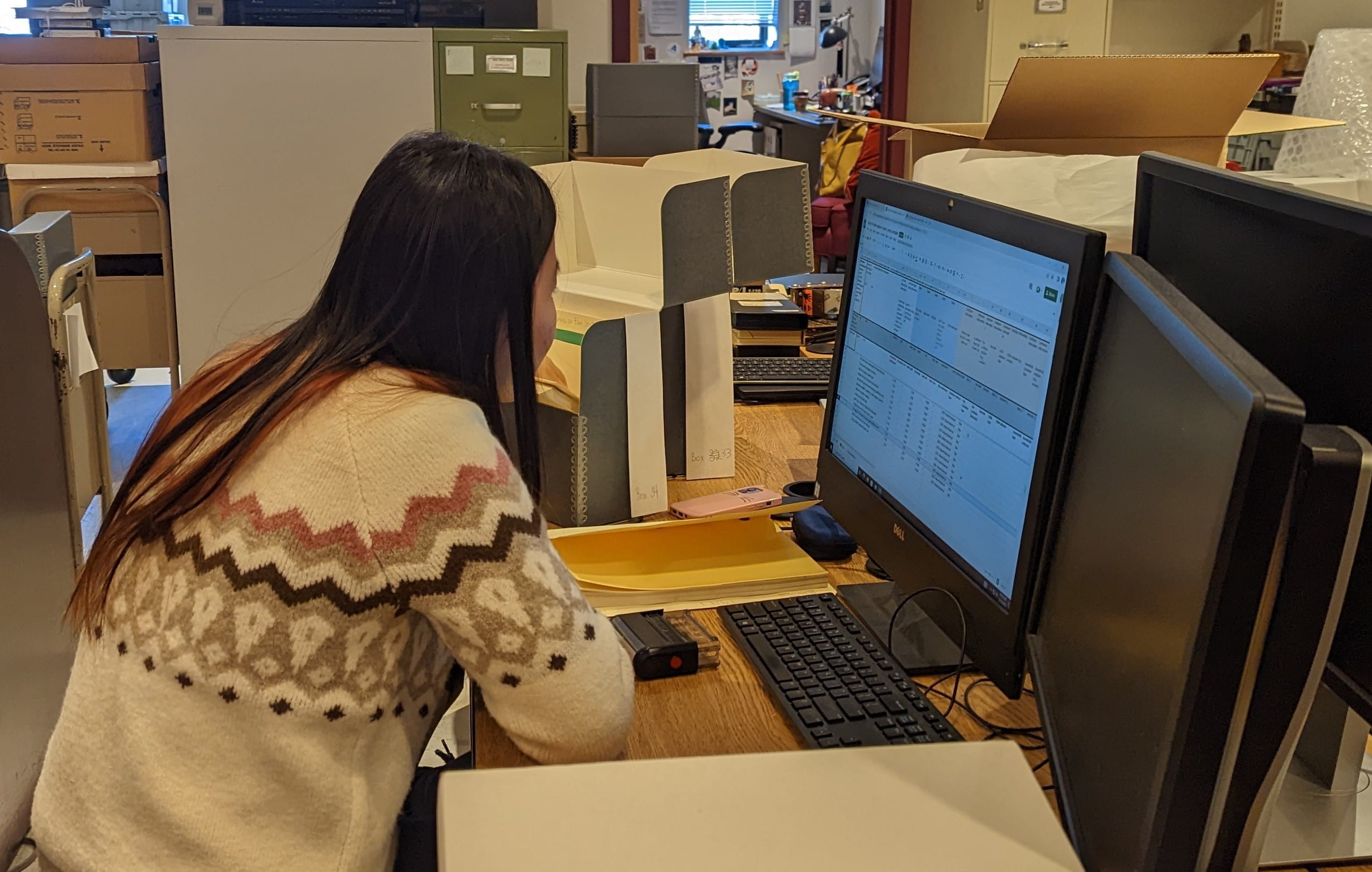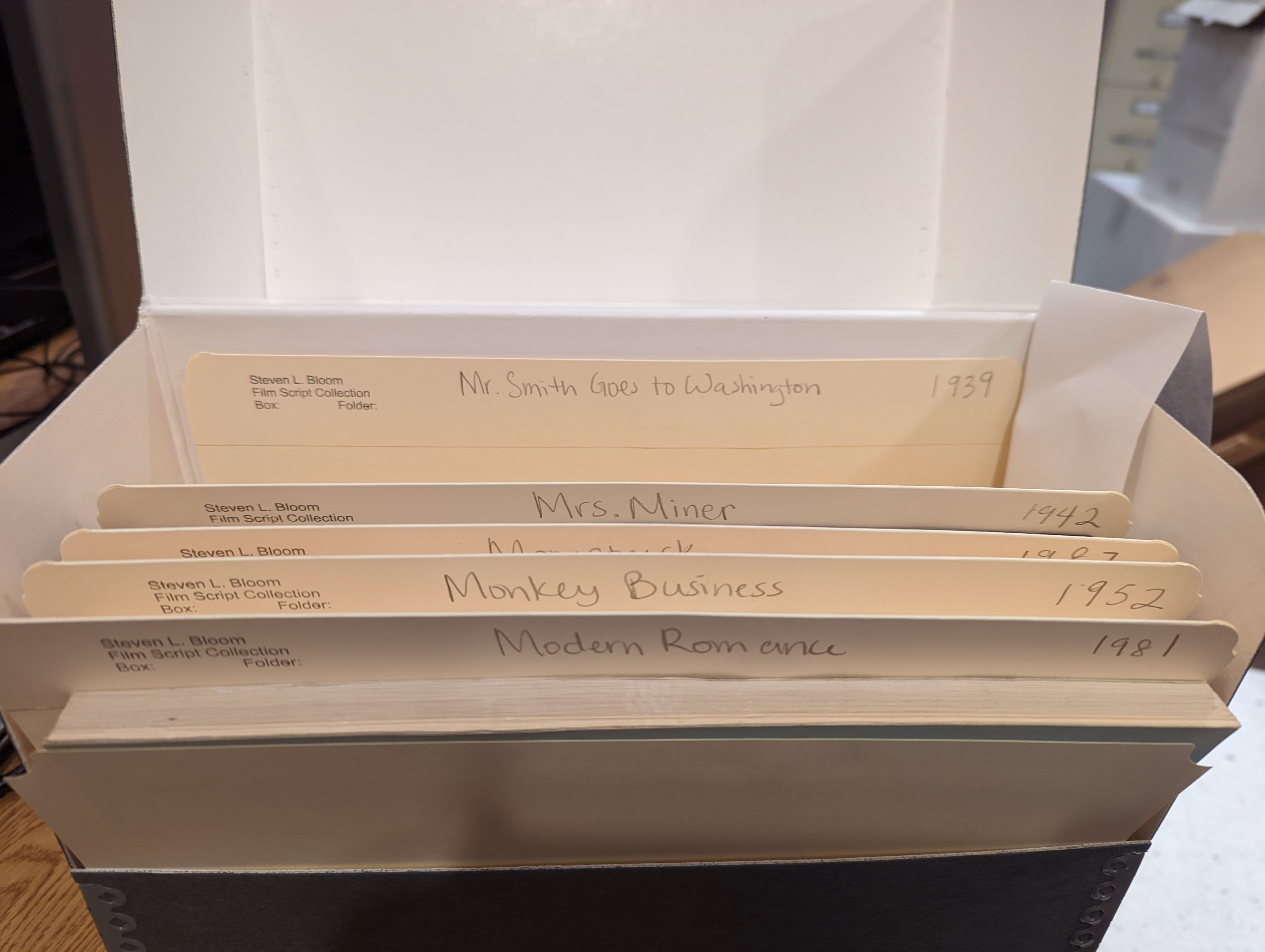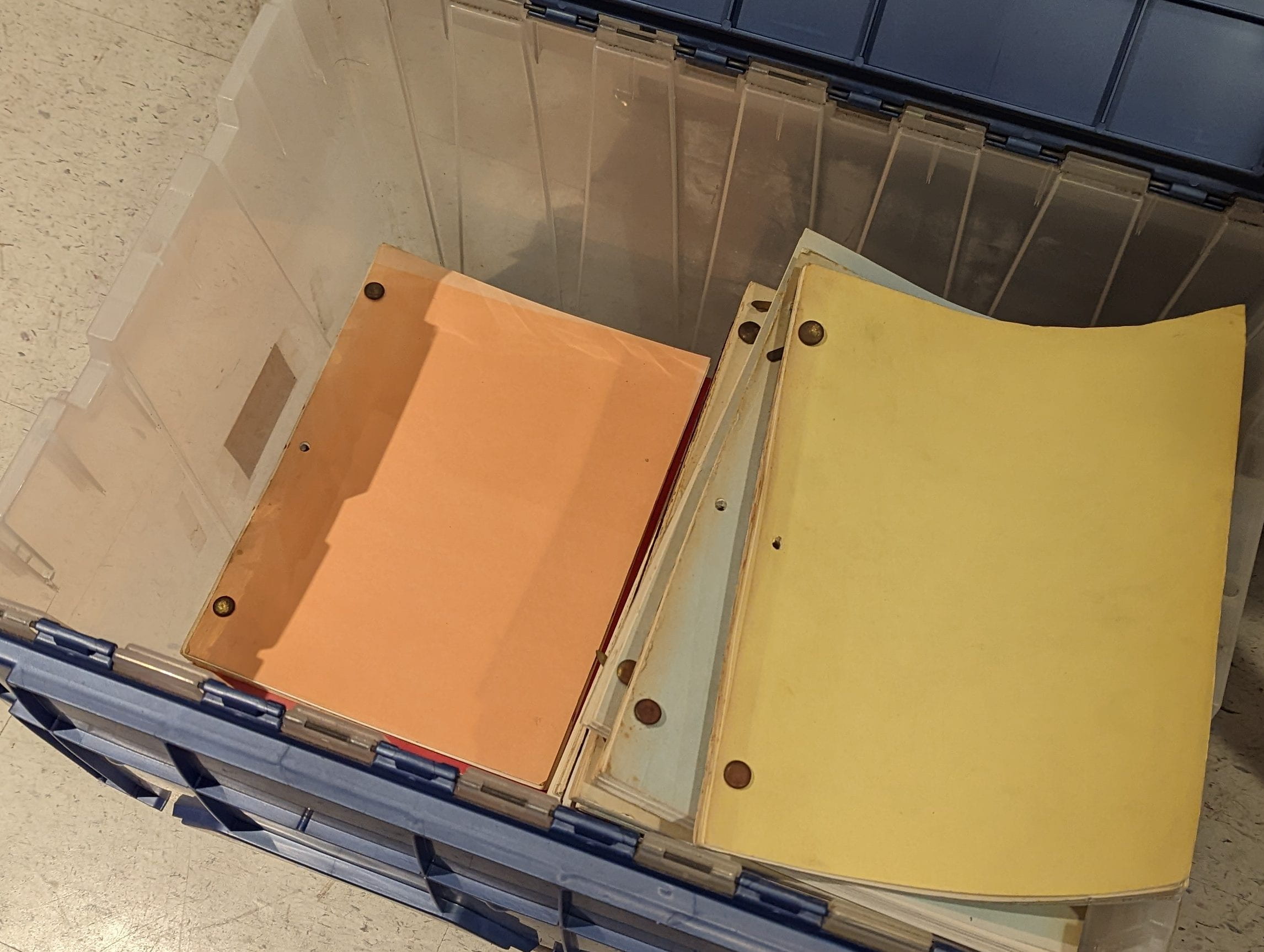The scripts soon after arriving at the Archives, before processing.
We’re delighted to announce the arrival of a new collection in Archives and Special Collections: the Steven L. Bloom Film Scripts Collection.
A graduate of Brown University and the University of Southern California School of Cinematic Arts, Steve Bloom has been a working screenwriter for TV and movies for almost 40 years. Among his produced credits are the films “The Sure Thing,” “Tall Tale,” “James and the Giant Peach” and, most recently, “The Perfect Date” on Netflix. Bloom is donating the collection in memory of his parents, Ruth and Joseph Bloom, who were avid movie watchers.
When asked to describe his collecting strategy, Bloom told the Archives: “I first started collecting classic screenplays when I was a graduate student in film school. Through the years, when I worked for the studios, I would request screenplays from their archives or from producers for more current movies I admired. I’ve found great, well-crafted scripts to be a wellspring of information and inspiration and I hope others will too.”
The Bloom Scripts Collection comprises approximately 441 scripts roughly representing the same number of movies. The films span the period from the 1930s (within a decade of the first “talkies”) to the 2010s. The collection encompasses practically the entire history of film as we know it today. A few of the movies included in the collection have more than one version of the film script present in the collection, showing variants between the versions.
Film scripts enjoy a unique place when considering the scope of printed materials. Production scripts are similar to limited edition publications. More commonly available photocopied screenplays are akin to mass market paperbacks. But the text of the screenplay is only one aspect that has value; screenplays reflect so much about the moviemaking and film history. Because of its breadth, the Bloom Scripts Collection offers a window into that process.
The collection includes photocopy scripts from a Hollywood retailer, but many of the scripts come directly from the film studios. Some scripts include a number handwritten on the cover indicating that it was one of the first produced and disseminated. These are usually found in extremely small quantities. The collection includes various drafts – some are first drafts, others later. Still others are later drafts with subsequent revisions made. Again, these scripts and revisions provide a window into the process of creating a film and often show the influence of multiple agents on the ultimate, finished product.
Because of the various aspects of filmmaking that are revealed by any given script, this collection as a whole provides a wealth of resources for studies of film, film history, filmmaking, Hollywood history, and other related subjects. In addition, the collector/screenwriter’s own markings demonstrate engagement with the material, pointing towards critical questions and analysis of the text.

The collection is rapidly being arranged and described by one of our intrepid student workers, Ashley Bao (AC 2026). She is arranging the scripts alphabetically by title. The description of the collection will also include the date a film was released, allowing for researchers to search by title or by date. The collection is currently in process, but we plan to have the finding aid available to the public early in the new year.

The Bloom Scripts Collection has already attracted the attention of Amherst College faculty in the Film and Media Studies department. Archives and Special Collections is eager to invite students to engage with the collection, and the Bloom Collection is an excellent complement to our other film and theater collections which include: John Kretchmer (AC 1975) (“Jurassic Park”), David Black (AC 1967) (“Law & Order”), Clyde Fitch (AC 1886), and the Samuel French Company Theater Collection.


Congratulations! An amazing collection.